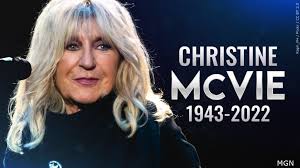It is not simply the Department of Justice (DOJ) who have emphasized corporate culture over the past 14 months. Many companies and compliance professionals have worried about culture since the Covid-19 pandemic forced organizations to adapt to new working arrangements which, by their nature, isolated employees. Now with the return to work in the form of hybrid work, many compliance professionals are thinking about how to re-engage employees from a cultural perspective in a manner which will meet the new DOJ strictures announced by Deputy Attorney General (DAG) Lisa Monaco in her October 2021 speech.
Before we get to today’s blog, I want to take a few lines to mourn the passing of Christine McVie, from the mega-Super Group Fleetwood Mac. She is the first of their five-person classic line up to pass. She was married to bassist John McVie during part of her tenure with the group. While most fans focused on Stevie Nicks as the lead singer of the group, for me, the top voice was always McVie. Husky and sultry, it was the perfect counterpoint to Nicks. McVie was also the band’s keyboardist and, more importantly, a fantastic songwriter. Her New York Times (NYT) obituary reported that in the band’s Fleetwood Mac’s “Greatest Hits” anthology, which was released in 1988 and sold eight million copies, McVie “either wrote or co-wrote half of its 16 tracks.” Some of the songs she wrote (or co-wrote) included: Say You Love Me, You Make Lovin’ Fun, Hold Me, Don’t Stop, Over My Head and Little Lies.
I was intrigued by a recent Harvard Business Review (HBR) article, entitled Revitalizing Culture in the World of Hybrid Work, reviewing a Gartner study entitled ‘Evolve Culture & Leadership for the Hybrid Workplace’. The article noted, “two-plus years into the pandemic, many leaders worry that remote and hybrid work are undermining their organizations’ culture. Their concerns aren’t entirely misplaced: A 2022 global study by the research and advisory firm Gartner found that just 25% of remote or hybrid knowledge workers feel connected to their company’s culture. But forcing employees back to the office is risky, as CEOs including Elon Musk and Jamie Dimon have discovered firsthand. Companies should take another tack.”
Indeed, the article quoted Alexia Cambon, a research director in Gartner’s HR practice and a principal author of the study, who said, “I find it ironic when leaders say they need to bring workers back to the office because of culture. They’re going to get the opposite of what they hope for. Instead of viewing hybrid work as a disruption to the cultural experience, leaders should see it as an opportunity to build culture differently.” The reality is that even with the rantings of Musk, hybrid work is here to stay not simply because employees want it, but it makes a company run more efficiently.
Cambon explained that culture has two components. The first is alignment, which she defined as “employees know what the culture is and believe that it is right for the firm.” The second is “connectedness, which means that those same employees both “identify with and care about the culture.” The Gartner survey of “more than 4,500 knowledge workers and 200 HR leaders showed that in-office mandates drove connectedness sharply down. Among employees with “radical flexibility” (defined as considerable freedom over location, schedule, work volume, team, and projects), 53% reported a high degree of connectedness, whereas just 18% of those with low flexibility did so.”
Understanding this culture dichotomy is important because most compliance professionals are struggling with how to re-engage employees with their corporate culture. Certainly, the Monaco Memo mandates around corporate culture are also driving these concerns. The starting point is to realize that pre-pandemic most efforts to imbue and communicate about corporate culture were around alignment. Compliance professionals tended to believe that “connectedness would occur more or less by osmosis.” Obviously, this approach needs to be rethought in a hybrid working environment “where employees spend 65% less time in offices than they did before the pandemic.” Fortunately, the article provides a three-step roadmap for compliance professionals to do so.
Communicate culture through your organization’s work. The pandemic showed that productivity increased when employees worked from home as “People often have more time for deep work.” An organization needs to use this insight as an “opportunity for employers to instill culture through daily tasks.” Cambon believes, “Every time you engage in a task, you should see the corporate culture reflected in it.” To accomplish this compliance professionals should audit “firm’s work processes to make sure they are compatible with the intended culture… “Say you want your firm to be innovative, forward-thinking, and fast-paced. If your methodologies are bureaucratic and your systems have constant technical glitches, that will undermine the culture.” For the compliance professional, it would allow you to reinforcement your culture messaging literally with every task an employee engages in.
Connect through emotional proximity. Musk and Dimon believing that “in-office interactions sustain culture confuses physical proximity with the more important sensation of emotional proximity.” They are very different as “physical proximity is being in the same space as another individual” whereas “emotional proximity is being of importance to others.” Yet with fewer workplace interactions, each exchange can make a much stronger impact. It allows and even requires that meetings become more efficient so as not to waste everyone’s time. Compliance professionals can help the business leaders “create moments of emotional proximity by helping remote employees see how their work connects to the company mission.” Most importantly, the article states, “The more employees feel that their contributions are valuable, the more connected to the culture they become.”
Shift from optimizing corporate culture to fostering microcultures. Every Chief Compliance Officer (CCO) at a multinational understands the challenge of creating a strong corporate culture while also allowing local microcultures to thrive. But this challenge can provide an opportunity for “team-level experiences increased connectedness substantially more than enterprise-wide initiatives did. As a compliance professional, you can provide the “guidance to sail in the right direction” without prescribing specific norms and behaviors. The article concludes, “The pandemic has radically changed how employees experience corporate culture, and firms must embrace the new reality. “By relying less on osmosis to drive connectedness and more on intentionality, leaders will see outsized impact on performance and intent to stay.””
Tom’s Top Five Christine McVie playlist (all from YouTube)
Say You Love Me
You Make Lovin’ Fun
The Chain
Over My Head
Little Lies






